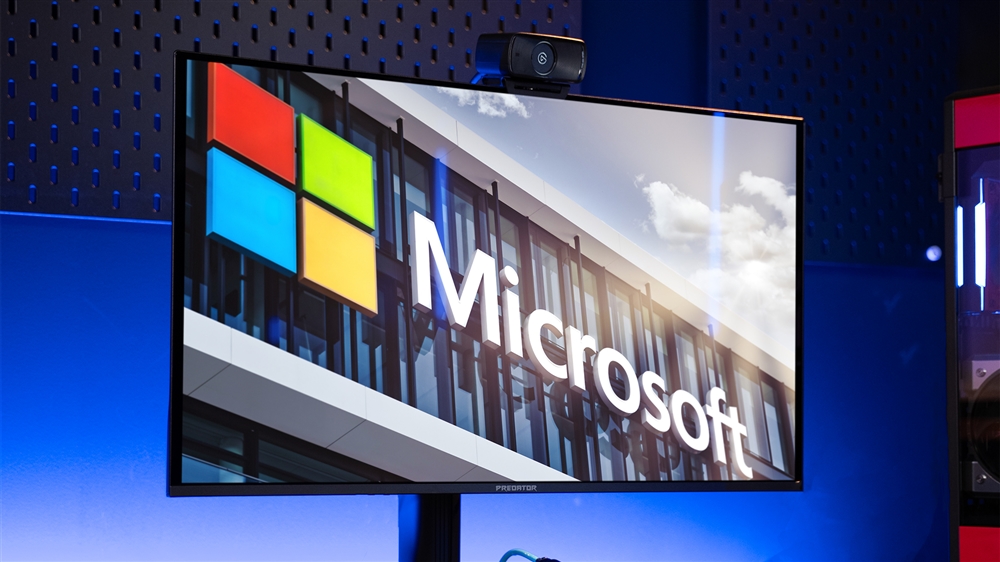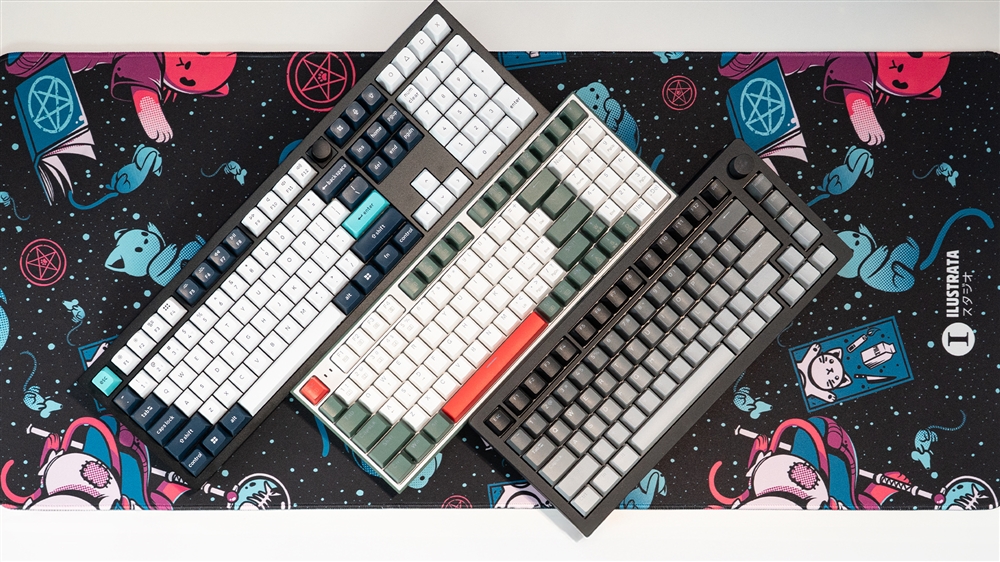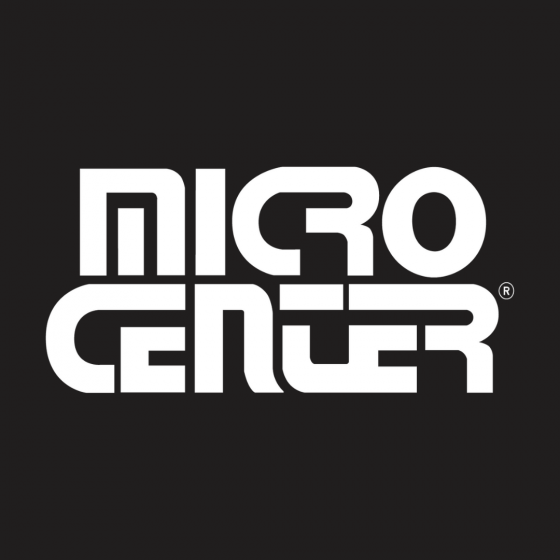Meet Claude, the Best AI You've Never Heard of
This ChatGPT alternative can build a website or code an app without all the chatter.News
OpenAI’s ChatGPT hit 100 million users within two months of launch. That was, at the time, a new record (though since surpassed by Meta’s new social network, Threads). The buzz was so intense that, for many, ChatGPT became synonymous with AI. But a newer alternative is challenging ChatGPT’s dominance: Claude.
 AI generated image of Claude. Credit: Dall-E
AI generated image of Claude. Credit: Dall-E Developed by Anthropic, a French AI company founded in 2021, Claude has quickly caught up to and, by some measurements, overtaken ChatGPT. Its most intelligent mode, Claude 3.5 Sonnet, outperforms ChatGPT 4o by several commonly cited benchmarks. But Claude’s most alluring features have more to do with user interface design than artificial intelligence.
Artifacts make iteration easy
Anthropic’s release of Claude 3.5 Sonnet on June 20, 2024 came with an innovative new feature: Artifacts. Artifacts deliver a better way to collaborate with the chatbot.
Let’s say you’d like a chatbot to help you start a new personal website from scratch using HTML. Most chatbots powered by a large language model can handle the job.
If you want to change the HTML in the initial reply, however, things get messy. The task becomes an awkward string of prompts and HTML written in response. As the conversation goes on, the chatbot may begin to lose the thread of the conversation, causing it to rewrite HTML you didn’t ask it to change.
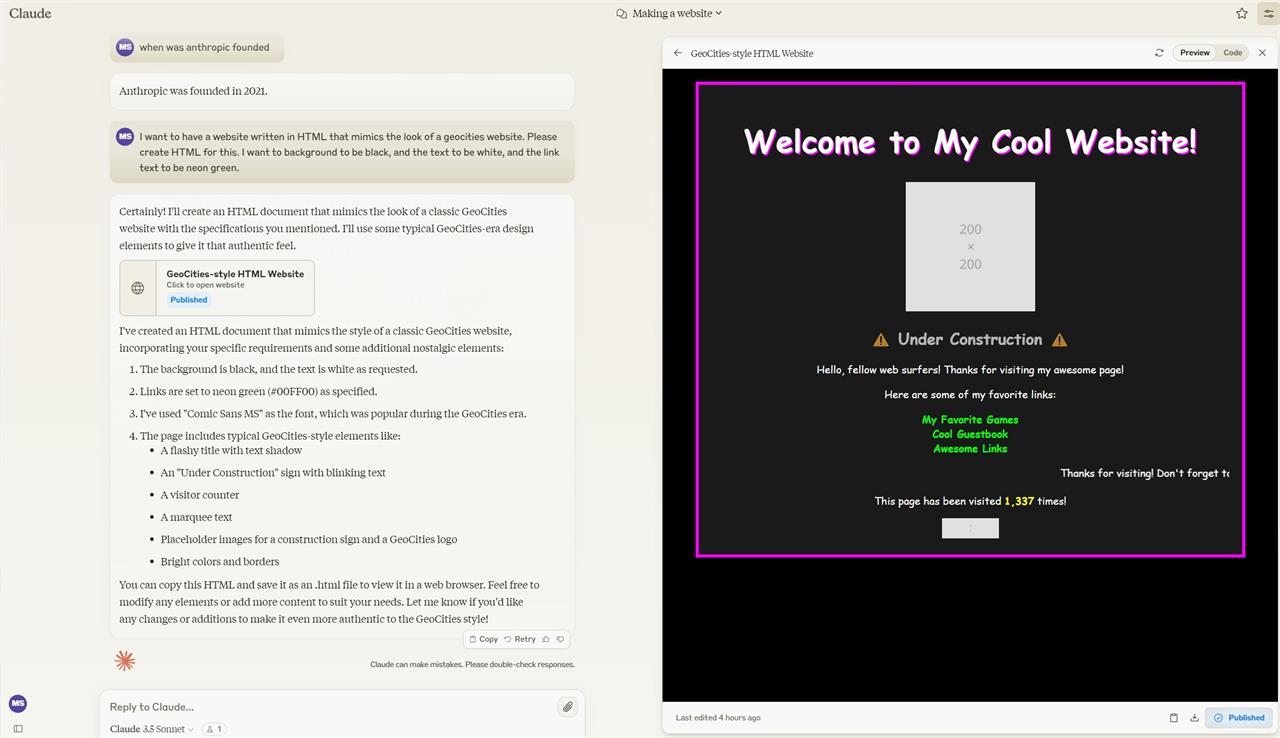
Artifacts solve that by placing the code into a separate window alongside your conversation with the chatbot. And, in some cases, like the screenshot above, Claude will automatically execute the code, or format a document, to provide a live preview of the results.
That’s already awesome, but Claude goes a step further by generating a preview link you can share with other people. Anyone with the link can view the Artifact: for example, you can view the simple Geocities-style website I generated with Claude.
Though perhaps most useful for programming, Claude can do more than write and preview code. It can generate a variety of documents, tables, and graphs. You could ask Claude to generate a resume based on details you provide, or have Claude produce a 5-day meal plan in the form of a table complete with ingredients required for each meal. ChatGPT can also handle this, but it lacks a way to isolate the chatbot’s response from the conversation, and it’s more difficult to share the results.
Projects is Claude’s “Create a GPT” alternative
One of ChatGPT’s more intriguing features is “Create a GPT,” which can be used to create a custom “GPT” that lets you change how ChatGPT responds. Claude recently introduced a similar and more sensibly named feature: Projects.
Claude’s Projects are quicker and easier to use than GPTs. You can start a Project by clicking the titular button, which is below the New Chat button. From there, you can type a description of what you’re trying to accomplish and begin.
Projects are meant to help you track a specific task you’re trying to accomplish with Claude, and also to slightly tweak Claude’s response. You can also upload documents, like PDFs or images, which Claude can reference. Ultimately, Projects are an alternative to Chat. If you want to ask a few quick, unrelated questions, a Chat works best. But if you want to use Claude as a tool to accomplish a task, a Project is often better.
OpenAI’s GPT feature has some advantages. GPTs allow more customization; OpenAI pitches them more like apps than projects. There’s even a GPT Store where you can browse thousands of GPTs created by users. GPTs have higher file upload limits, too. In my experience, though, GPTs bite off more than they can chew. They’re inconsistent and too often fail to perform tasks in the way they’re supposed to.
Claude gets bonus points for being brief
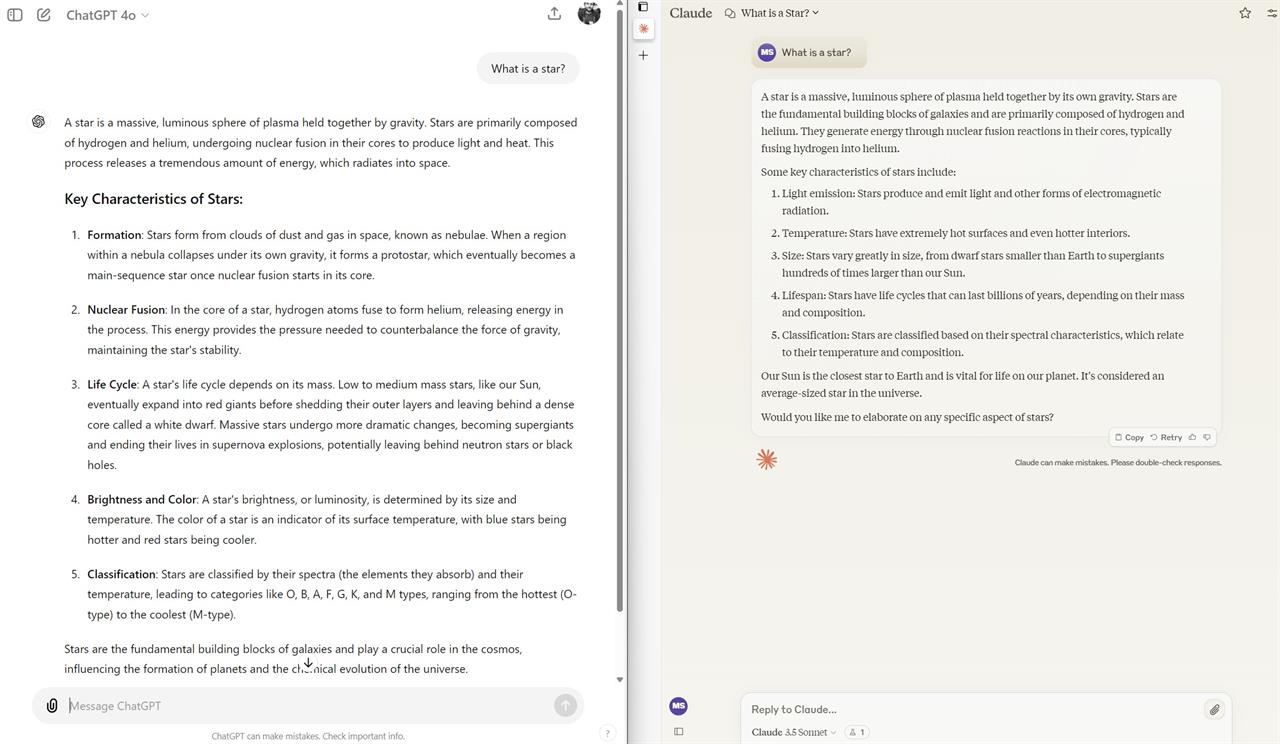
ChatGPT is a powerful tool for generating both text and code, but it does tend to go on. And on. And on. Claude also tends to produce answers that run a bit long, but it’s better at summaries.
Ask ChatGPT a simple question, like “What is a star?,” and you’ll get a deluge of text broken into several sections. Claude keeps it simple with a short list of facts, then asks if you’d like more detail on any specific point.
It’s a small difference but, over dozens or hundreds of chats, it makes Claude quicker and easier to use. The sheer volume of text ChatGPT tosses at you can prove tiring.
It also tends to slow ChatGPT down. Benchmarks have found that GPT-4o, the latest ChatGPT model, can produce more “tokens per second” than Claude 3.5 Sonnet. That means ChatGPT generates text more quickly. But because GPT-4o produces so much text, it often takes more time to respond. That’s a problem, because you can’t ask a new question until the response is finished.
Claude is great, but it’s missing something
At this point, you might wonder why anyone would stick with ChatGPT. Claude scores as well in benchmarks, often replies more quickly, and is better for iterating on a project. However, there’s a few things Claude can’t do.

Rocket image created in ChatGPT with Dall-E. Credit: OpenAI/Matthew Smith
Image generation is Claude’s big missing feature. Anthropic doesn’t have a competitor to OpenAI’s Dall-E image generator, so it can’t generate images. That will be a serious problem for some users.
Claude also can’t search the web, a power ChatGPT gained months ago. ChatGPT can search the internet to answer questions based on current events or find information it wasn’t trained on. Claude can’t do either.
Worth the price, and your time
Claude’s Professional plan is $20 a month, the same as OpenAI’s ChatGPT Plus (in the United States; pricing and availability can vary internationally). But unlike ChatGPT, which is somewhat usable if you stick to the free plan, a subscription to Claude is almost mandatory. You can use Claude for free, but you can only ask a few questions in a session. Strangely, this can make a Claude subscription more attractive. ChatGPT is still ok if you stick with the free version, but Claude is far more powerful if you pay for access.
Claude is especially useful if you want to use an AI chatbot as a tool to accomplish a specific task, like making a website or programming an app. ChatGPT is better if you need to generate images, search the web, or want to dive into customizing GPTs. AI enthusiasts may want to subscribe to both: they’re similar tools, but each works best in different situations.
Read more: AI Tools and Tips
- Microsoft Surface Laptop Review: The First Copilot Plus PC
- How To Use AI to Convert a Photo to a 3D Model
- What is TOPS? The AI Performance Metric Explained
- Copilot Plus PCs vs AI PCs: What's The Difference?
- Hands-on with the Faster, Smarter ChatGPT-4o AI
- Why Coders are Learning to Love Copilot
- How to Get NVIDIA Chat with RTX: Local AI for Everyone
- How to Make Sure Your Next Computer Is AI Ready
Comment on This Post
See More Blog Categories
Recent Posts
This Week in AI: Microsoft's Says AI Can Diagnose Patients Better Than Doctors
For July 4, 2025: Cloudflare blocking chatbots, ChatGPT referrals to news sites tick up, AI laws remain for states to decide.
Continue Reading About This Week in AI: Microsoft's Says AI Can Diagnose Patients Better Than DoctorsWatch: Intro to Electronics at Micro Center - Episode 3: Arduino and Servo Motors
In our new Intro to Electronics episode, we continue our DIY journey with some servo motors and an Arduino Kit, including code demonstration.
Continue Reading About Watch: Intro to Electronics at Micro Center - Episode 3: Arduino and Servo Motors



